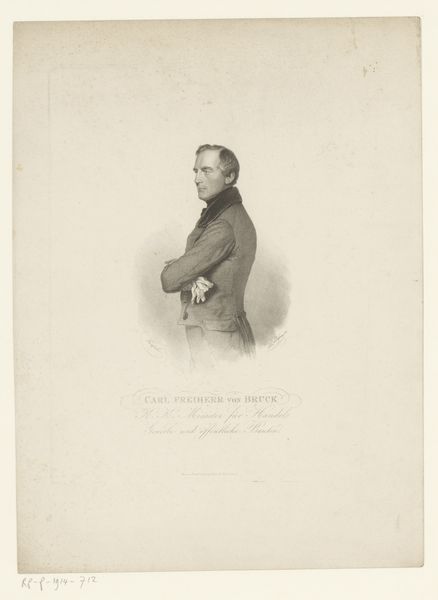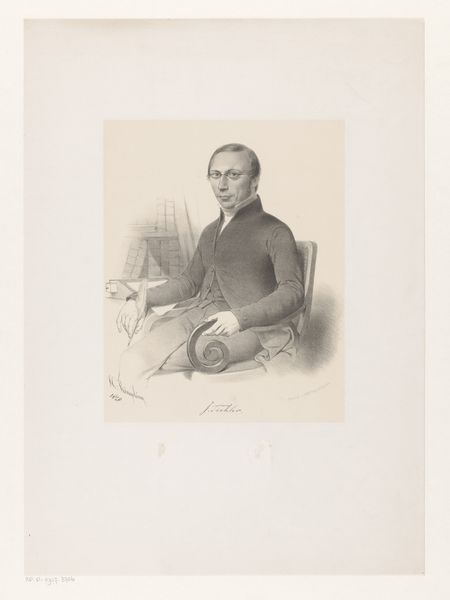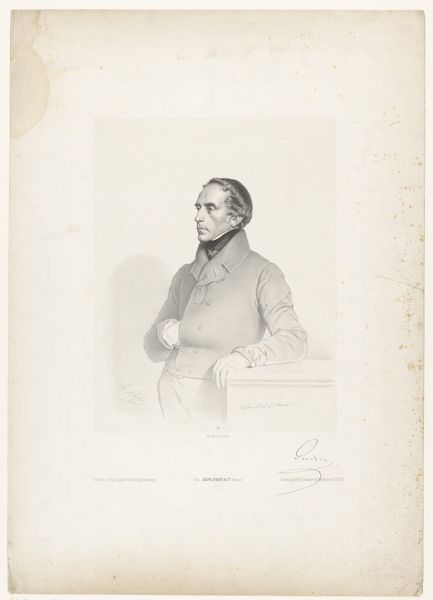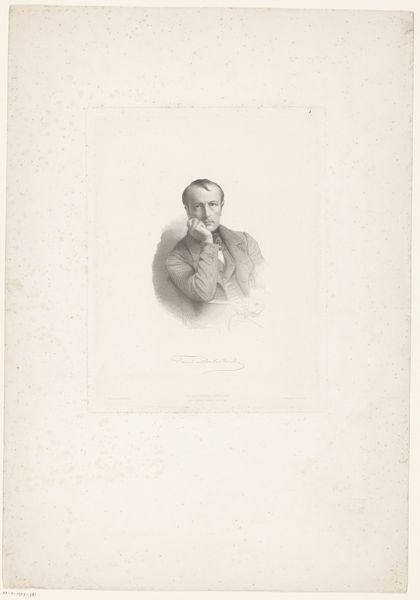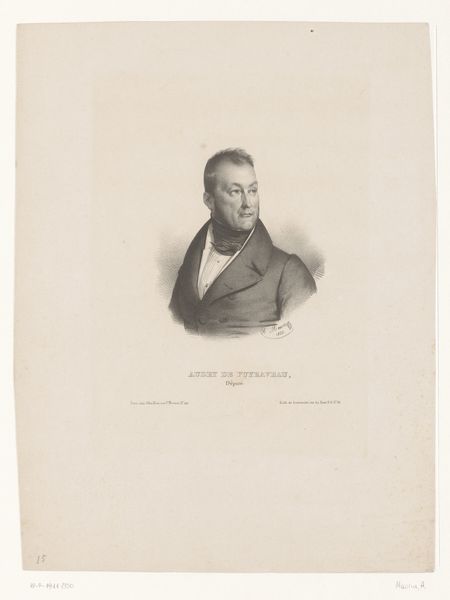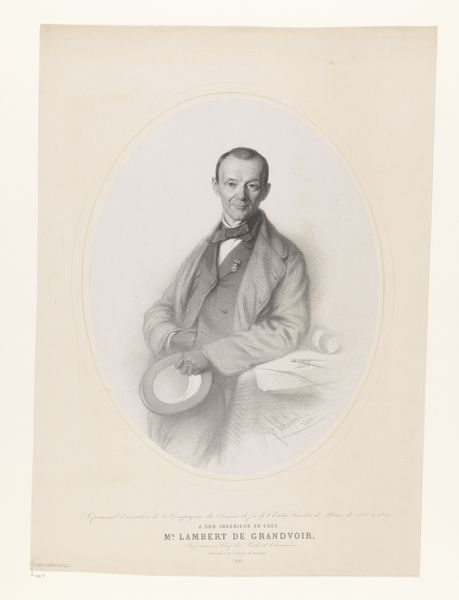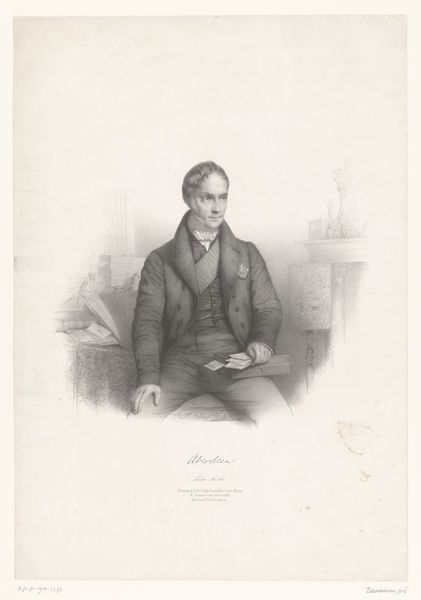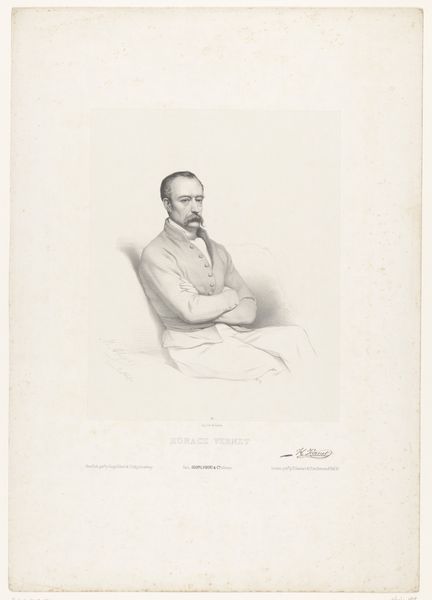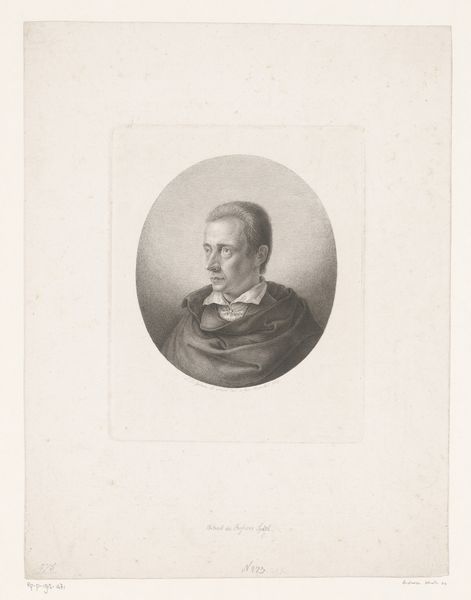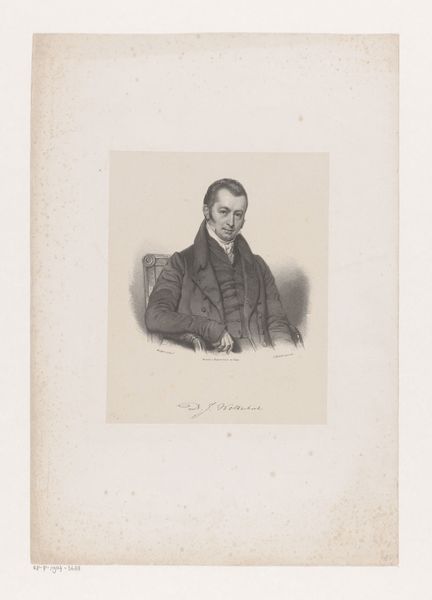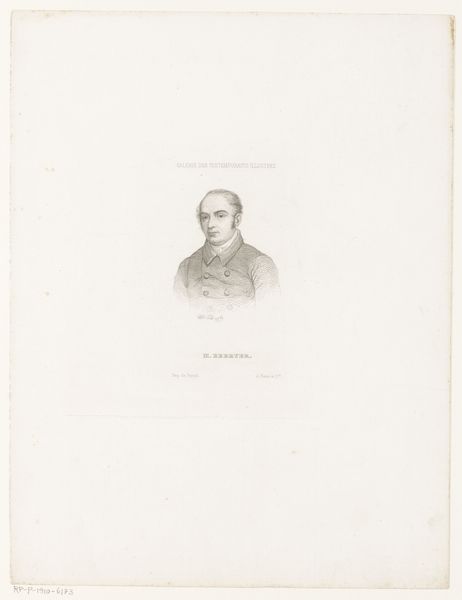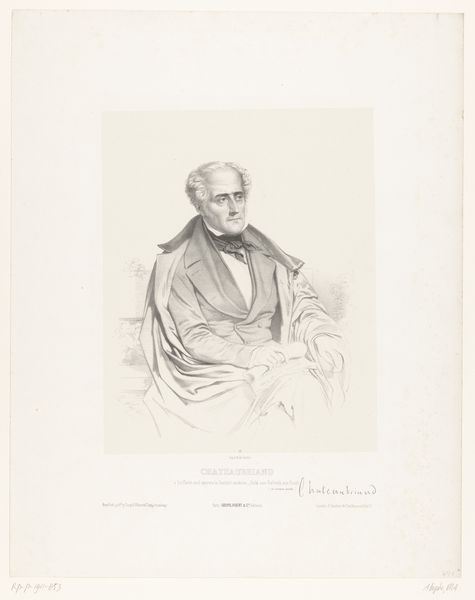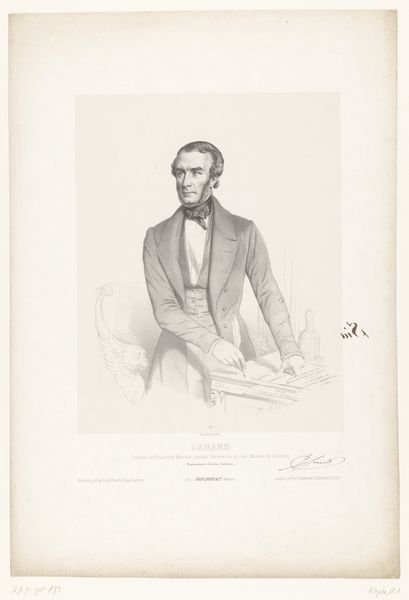
drawing, print, paper, engraving
#
portrait
#
pencil drawn
#
drawing
# print
#
paper
#
pencil drawing
#
romanticism
#
engraving
Dimensions: height 448 mm, width 375 mm
Copyright: Rijks Museum: Open Domain
Curator: This is a print from 1848 by Marie-Alexandre Alophe, depicting Alphonse de Lamartine, the poet. Editor: My first thought? Elegiac. It’s all soft lines and contemplation; it gives the sense of a man burdened by deep thoughts. Curator: Absolutely. Alophe really captured that Romantic sensibility. Lamartine, after all, wasn’t just a poet. He was a politician deeply involved in the Second Republic. You can almost see the weight of responsibility etched into his face. Editor: Exactly. You see it in the careful lines of the engraving, how his features are defined by light and shadow. But that's also part of the performance, right? The carefully cultivated image of the pensive, poetic leader, a common trope within the male-dominated, exclusive sphere of 19th-century political Romanticism. Curator: You know, I hadn't thought of it in terms of "performance," but that's astute. There’s definitely an element of constructed persona here. The soft paper and the engraving technique contribute to that feeling, don't you think? It’s like a veil of idealization over the very real political struggles of the time. Editor: Right, it softens him. Removes the harder edges, makes him more palatable. And let’s not forget Lamartine's own history in relation to the abolition of slavery. The nuances, like the sharp black collar against the pale shirt, highlight the sitter’s status while subtly concealing it with careful gradations of tone. Curator: So you see the use of the engraving technique, the way it obscures and reveals, as deliberate? As reinforcing existing social power structures? I like that idea. Editor: It's all interconnected, isn't it? The art, the politics, the artist, and the sitter—they all speak to a very specific moment and a particular ideology. Curator: Thinking about that interplay really deepens my understanding of this piece. It’s far more layered than a simple portrait of a poet. Editor: Indeed. It shows us how the personal and political are eternally intertwined, immortalized through image-making. It serves as a reminder of whose image is valued, amplified, and shared.
Comments
No comments
Be the first to comment and join the conversation on the ultimate creative platform.
